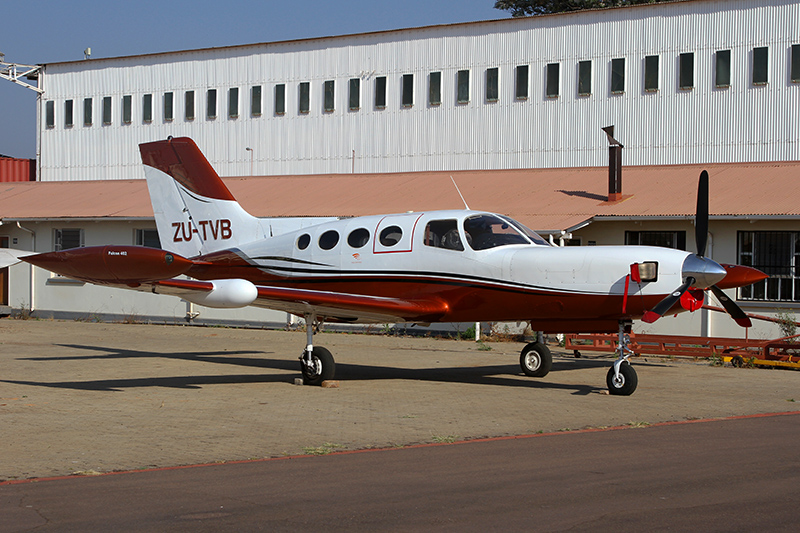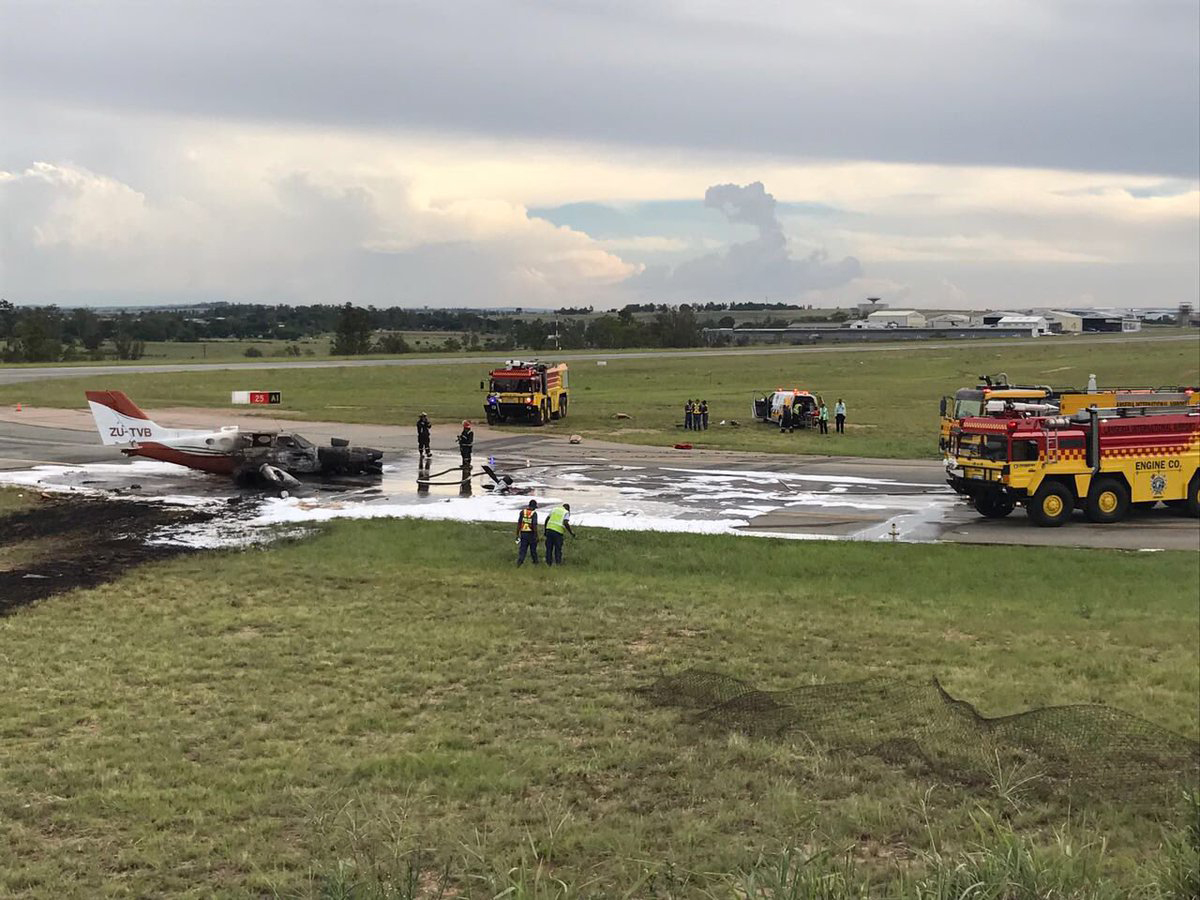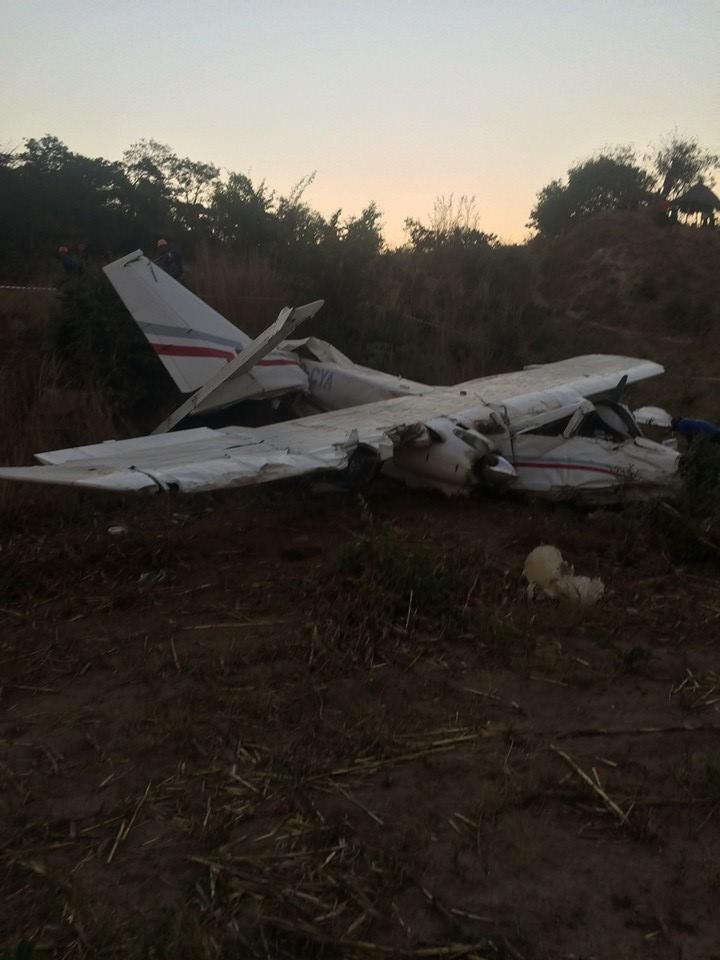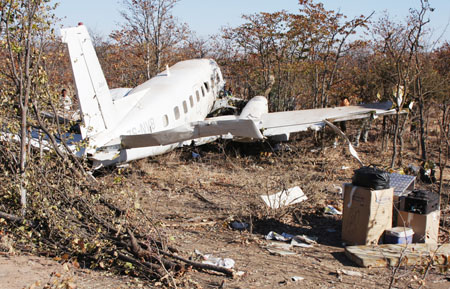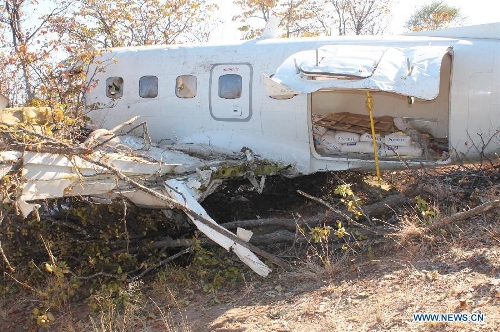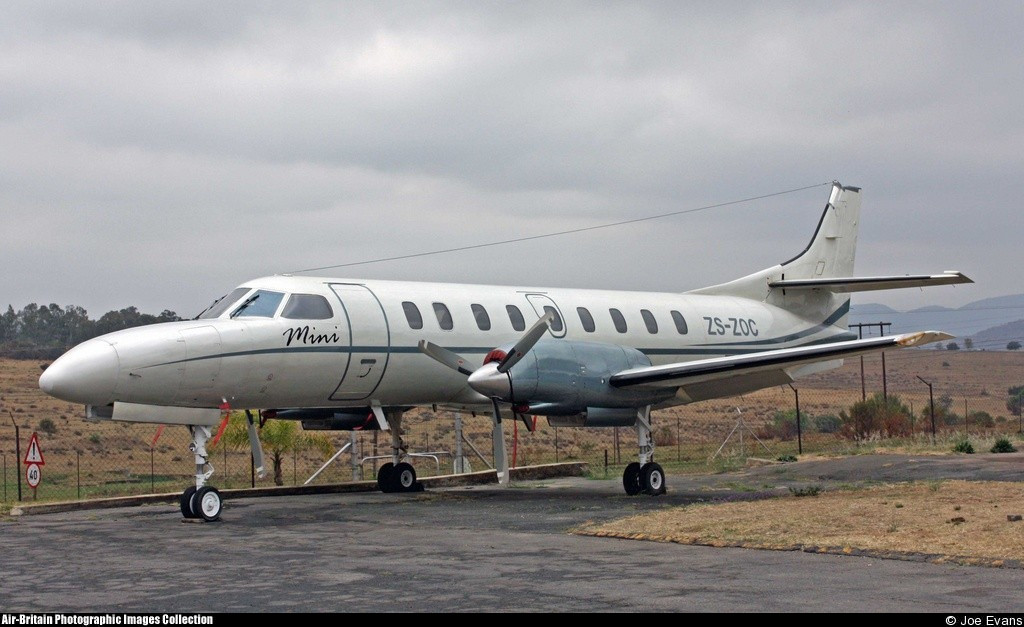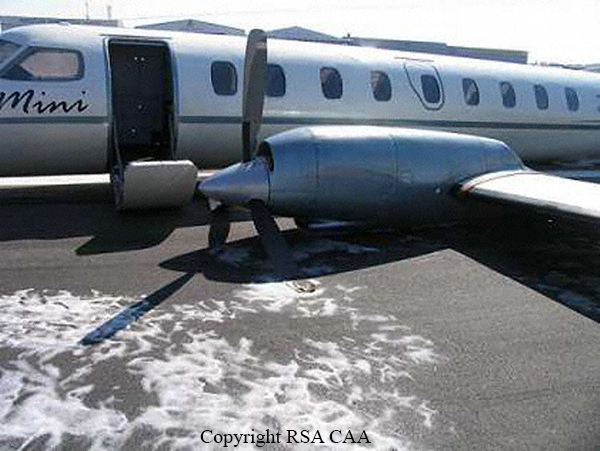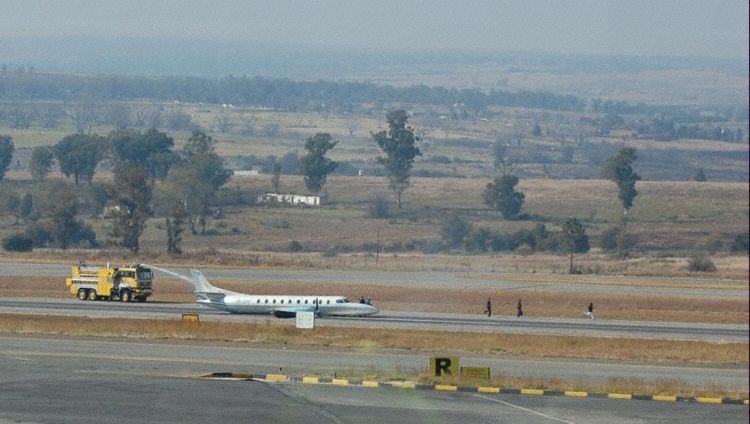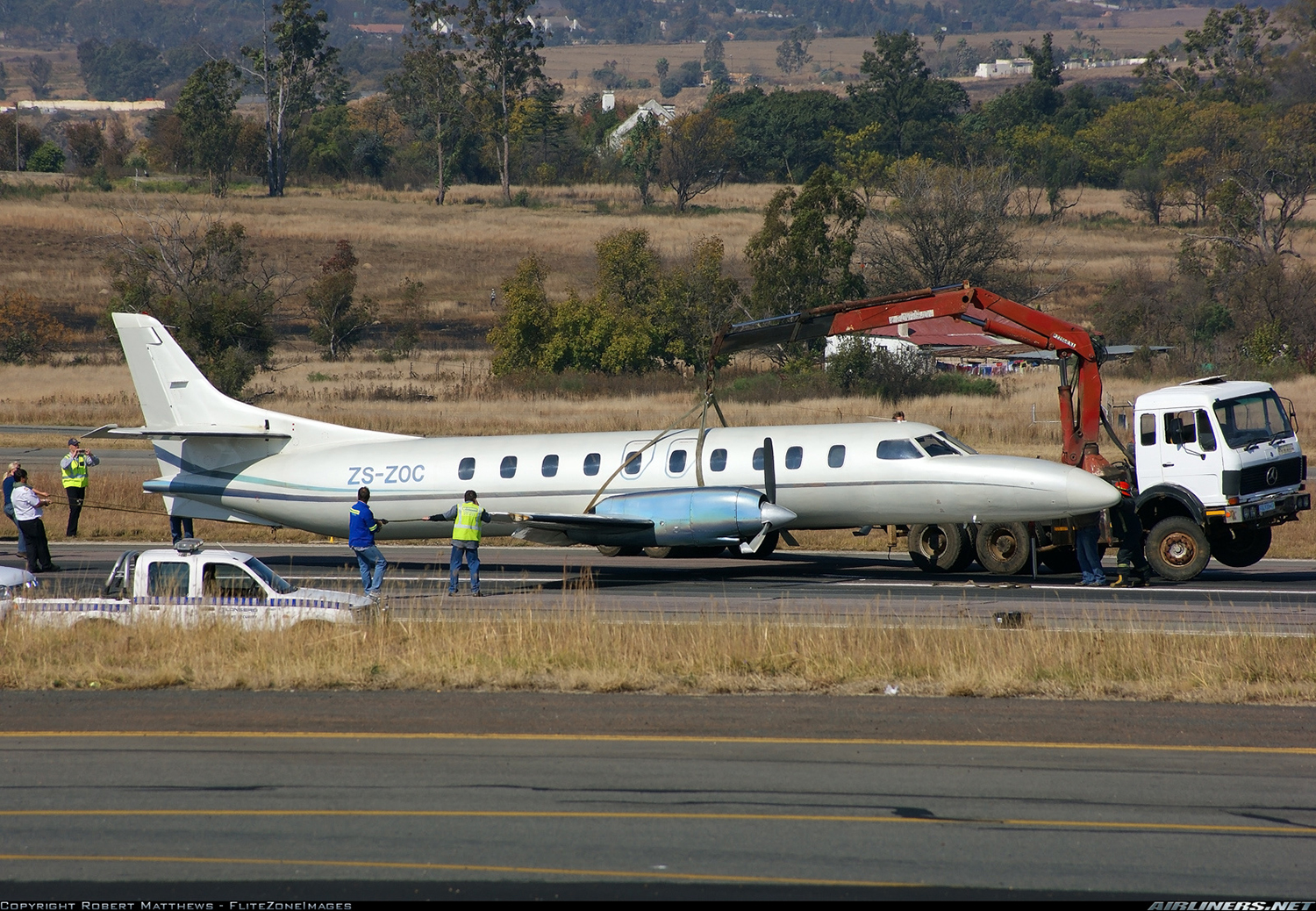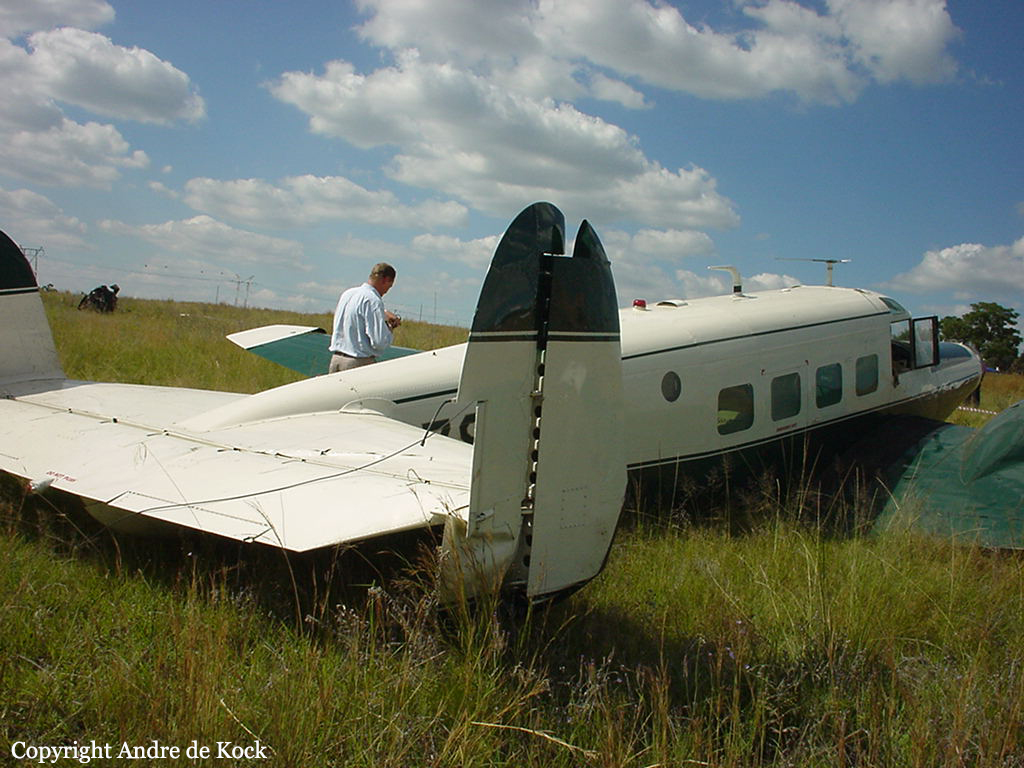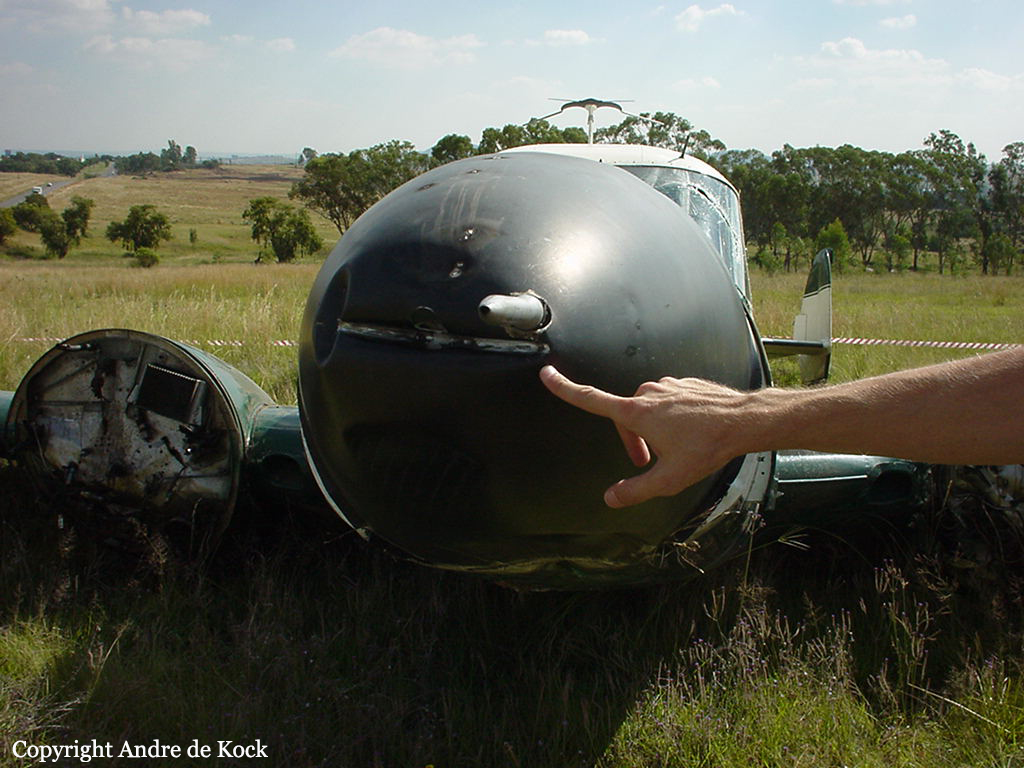Crash of a Cessna (DMI) Falcon 402 in Lanseria
Date & Time:
Dec 13, 2016 at 1530 LT
Registration:
ZU-TVB
Survivors:
Yes
Schedule:
Lanseria - Bazaruto Island
MSN:
402B-1008
YOM:
1975
Crew on board:
1
Crew fatalities:
Pax on board:
2
Pax fatalities:
Other fatalities:
Total fatalities:
0
Circumstances:
Shortly after takeoff from Lanseria Airport Runway 07, en route to Bazaruto Island in Mozambique, the pilot encountered engine problems. He contacted ATC and was cleared for an immediate return and landing on runway 25. On short final, the single engine airplane hit the perimeter fence and crashed near the runway threshold, bursting into flames. All three occupants were injured and the aircraft was destroyed by a post crash fire. Built in 1975, this Cessna 402B was equipped with a new turbo engine and redesigned as a single engine Cessna (DMI) Falcon 402 (the C402 is usually a twin engine aircraft).
